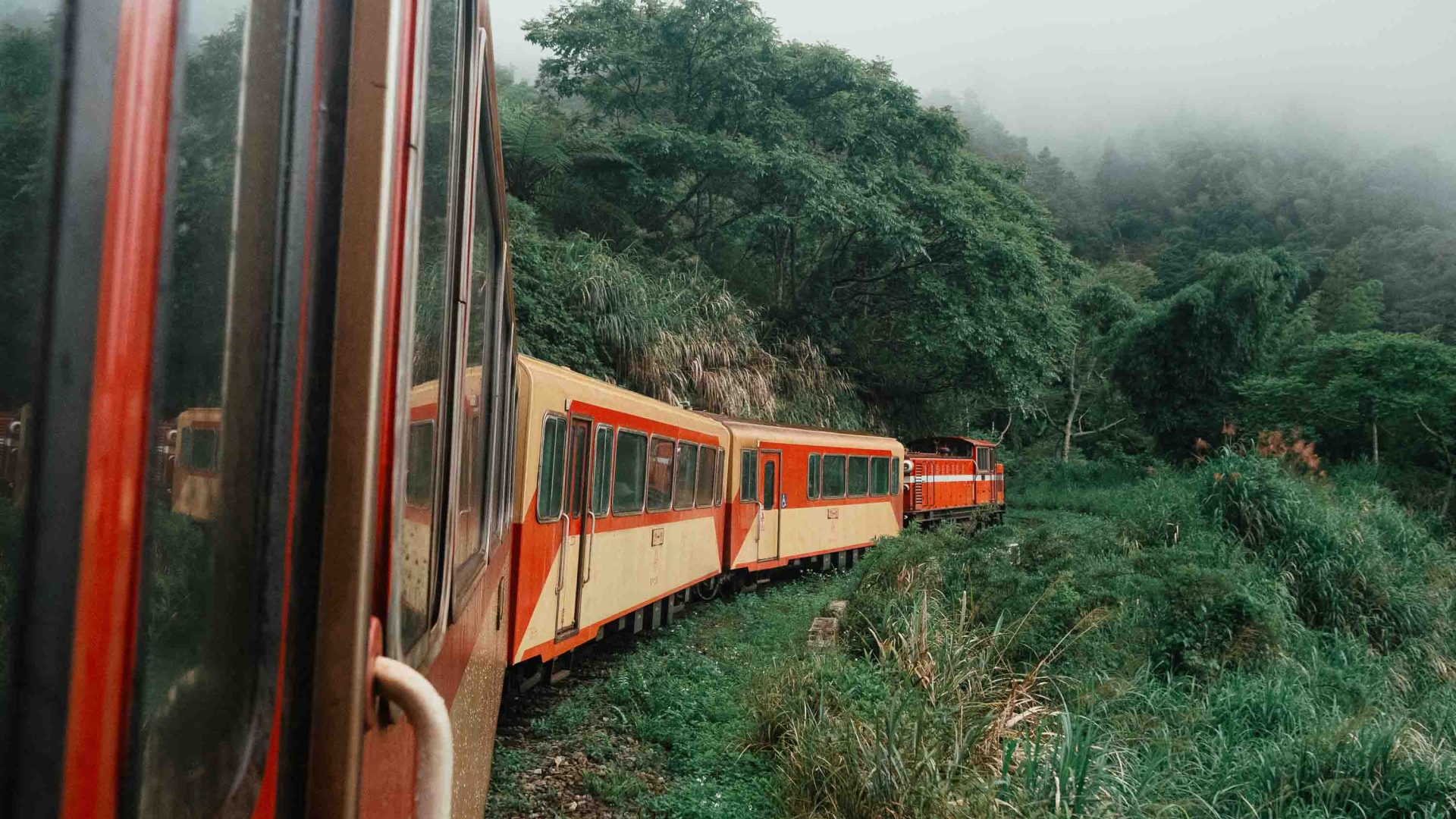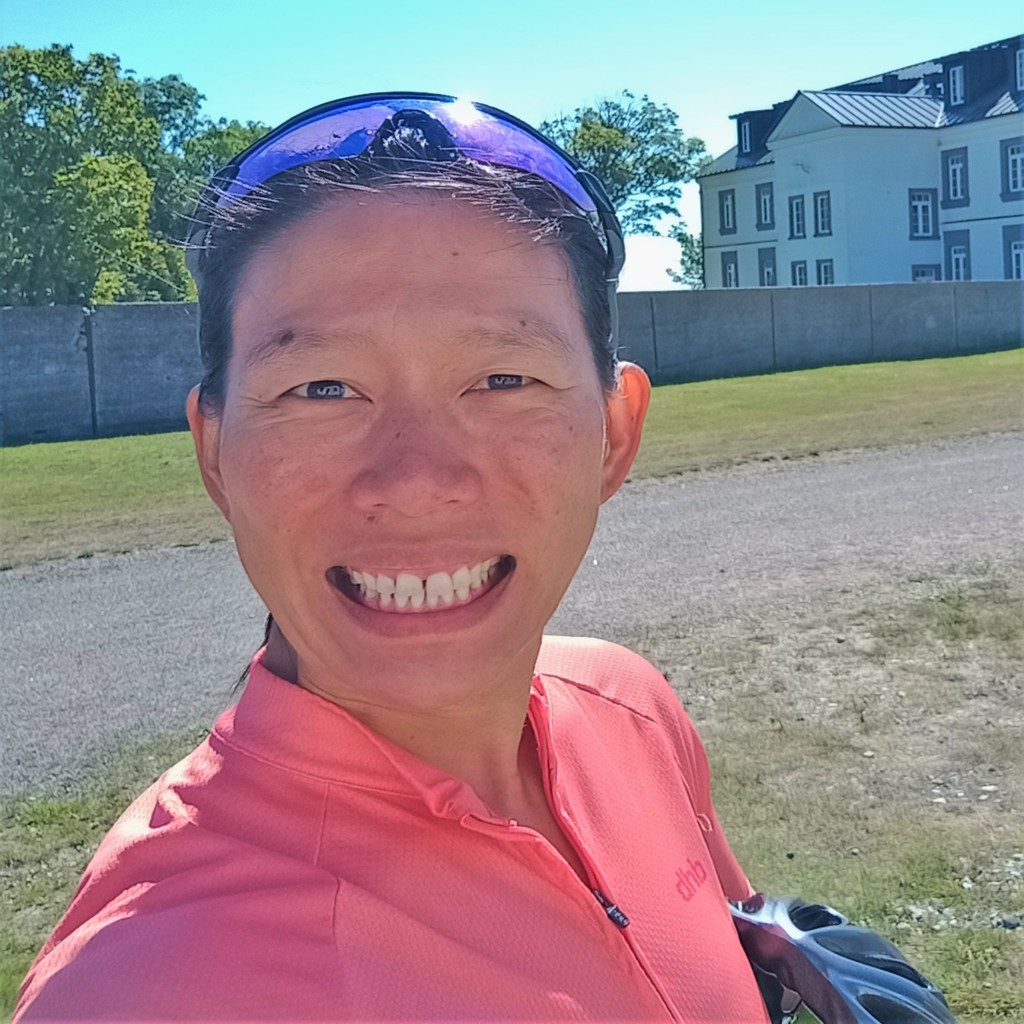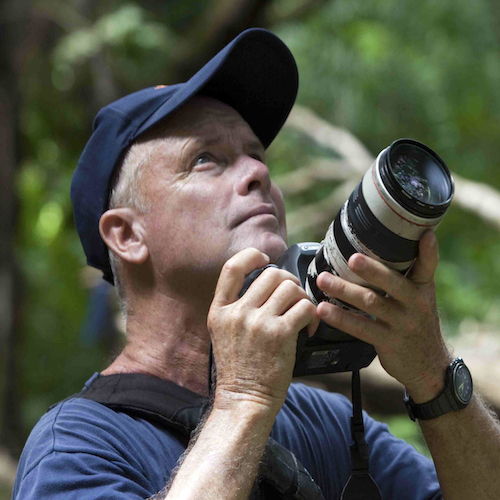
Riding the rails on regional, high-speed and narrow gauge rail, Leyla Rose experiences not only the vast variety of Taiwan’s trains, but the diversity of this nation’s people and culture.


Riding the rails on regional, high-speed and narrow gauge rail, Leyla Rose experiences not only the vast variety of Taiwan’s trains, but the diversity of this nation’s people and culture.
One block to the left of my hotel entrance, there’s a large sign on the wall. ‘Air defence shelter’, points an arrow. Save for perhaps Kyiv in Ukraine or the bombarded Gaza Strip, I struggle to think of many other cities in the world currently adorned with such signage.
But this is the reality of life for the 23.3 million people who call Taiwan—an island off the southeast coast of mainland China—home. Mainland China, firmly under the grip of President Xi Jinping and his CCP, maintains that Taiwan is a breakaway province that must be unified with the mainland. Taiwan, meanwhile, see themselves as an independent self-governing nation.
When it comes to the sensitive geopolitics of the Taiwan Strait—a key maritime chokepoint disputed by China and Taiwan—there are enough columns, books and essays written in multiple languages to occupy you for years. And when I ask about those current tensions between China and Taiwan, my Taipei Eats food tour guide Jean Huang describes it as being the child in a messy divorce. “For me, it’s on my mind because I have two kids and I really like living in Taiwan,” she says. Originally born in Taiwan before moving away to live in Canada, she returned in the 2010s to raise her family. “After living here for 11 years, I enjoy the benefits. I like the democracy, I like the security that the country gives me.” She admits this isn’t a subject she often talks about with her friends and family. “Usually it’s a pretty divided topic,” she says.
But against this tense geopolitical backdrop, as in so many places, life goes on. Taipei is thriving, dancing to the rhythm of hollering Mandarin (including the Taiwanese twist, as well as Taiwanese Hokkien) as street food stall owners flog their snacks and clatter their pans at a million miles an hour in the lunchtime rush. I’m a firm believer that the best introduction to a new place is through its food. And with Jean, I know I’ve made the right choice.
Jean guides us through a number of neighborhoods and markets, sampling everything from soft, meat-filled gua bao (pork belly buns), to crunchy fresh guava, peppered with an addictive dried plum powder that zings in your mouth. “Taiwan has gone through so much hardship, but food has always been there,” Jean tells me as we explore. “It’s our identity, in many ways.”
Indeed, the very best of Taiwan is on display here, as I spend night after night getting lost in the maze of brightly lit, smokey markets that you see in every corner of the city. My favorites include Lingjiang and Ningxia, where I sample everything from crispy duck rolls to soft scallion pancakes and fried sweet potato balls. I think I’m in love.
Taipei to Chiayi
After a week in the capital, it’s time to tear myself away. The plum-powder-with-anything addiction will remain, but there is much more of Taiwan to experience. I’m traveling in the best way possible. Taiwan’s railway system is the best I’ve encountered anywhere so far. State-owned, it is cheap, clean and efficient.
Perhaps the highlight is the ease of it all. I’ve been able to book my tickets up until the last minute through an app for a fair price that never fluctuates, and should I make a change of plan, I can just as easily cancel that ticket and receive a full refund. It’s public transport that actually works for, well, the public.
We wind our way up into the mountains across bridges spanning vast gorges, through tunnels burrowing deep into sheer cliffs, and past tiny stations like Lumachan that still showcase a distinct Japanese architecture in their clean woodwork; it’s all a dizzying feat of engineering.
Rail photographer and enthusiast Hsu Hao-Yu, who I’d come across on social media, tells me that “for many Taiwanese, the railway is often associated with the feeling of ‘going home’. Before cars and highways became widespread, Taiwan’s complex terrain meant that railways were the primary means of connecting people’s hometowns to the cities where they worked. For some people, especially those living in eastern Taiwan, boarding a train brings a deep sense of returning home.”
I may not be going home, but I am heading south—to Chiayi. I make my way through Taipei’s grand main station as morning sunlight streams through the Brutalist architecture, and down into the bowels, where my first train awaits at platform three. It’s an express service with sleek, brand-new carriages, smart-looking seats, and plenty of legroom, carrying me south to Chiayi, the gateway town to Alishan, Taiwan’s popular mountain resort.
As I munch my way through onigiri, seaweed snacks and fried egg-flavored chips of lunch items from 7/11 (even the convenience store food is delicious here), the train glides through suburbs and little towns at 80 miles (130 kilometers) per hour. Colorful temples pop against a gray sky, old-school apartment blocks rise above the rooftops, as the formidable mountains that form the backbone of this island disappear into the clouds on the horizon. Tomorrow, I’ll be exploring these peaks myself.
The following morning at Chiayi, I’m up early to board the Alishan Forest Railway, a delightful narrow gauge railway that winds 44 miles (71 kilometers) up to the mountain town of Alishan, climbing an impressive 7,940 feet (2,421 meters) along the way. It’s only in 2024 that the full route was reopened to the public, following severe damage from two typhoons.
For all the claims of ownership from mainland China (who, in the form of the Qing dynasty, claimed and ruled over Taiwan from 1683), I’m learning for myself that Taiwan’s history is far more complex and checkered than I knew. From 1895, the Japanese colonized Taiwan for 50 years and it was they who built and opened the Alishan Forest Railway, originally used to transport logged cypress and timber down to the coast from 1912 onwards.
As we creak out across the coastal plains, I’m amazed by how much is growing here; neat rows of maize and rice, leafy banana palms and the famous Formosan pineapples—they’re the sweetest and most popular fruit export on the island. While Taiwan is famous for its technological pedigree, agriculture remains a key sector for the island’s economy.
We wind our way up into the mountains across bridges spanning vast gorges, through tunnels burrowing deep into sheer cliffs, and past tiny stations like Lumachan that still showcase a distinct Japanese architecture in their clean woodwork; it’s all a dizzying feat of engineering.
Despite the temptation to travel the whole line in one go, I have it on good authority that there’s a village well worth visiting along the way. So at the halfway point of Fenqihu, I step off and take a short 10-minute bus down the valley to Shizhuo.
In the Shizhou dusk, I watch as blankets of clouds envelope the hills and valley which form dazzling array of tea plantations. At 4265 feet (1,300 meters) altitude, Shizhuo is the perfect place to grow tea, and the locals know it. There are over 10 different tea farms here alone.
The next morning, I meet with Steven Lin, the manager of Lin Yuan Tea Farm. “We’ve been growing tea for over 40 years here,” Steven tells me. “At first, we just grew bamboo, but you can only harvest that once a year… you can’t earn much money. It was my father who first planted tea in this region, realizing you can harvest it three times a year. Much better.”
The Tsou are one of 16 formally recognized Indigenous groups in Taiwan. If anyone can truly lay claim to the island, it is these Indigenous communities.
Steven generously spends the next hour sitting with me, sharing his expert knowledge on the variety of teas being cultivated up here. I try a selection, including Jinxuan, a smooth and creamy tea, and the Chin-Shin-Oolong, a partially fermented tea which tastes mellow and slightly floral. It’s like wine tasting but as a tea aficionado, even better.
Later that day, my bag now heavier thanks to the tea bricks I’ve bought (compacted tea leaves, a method that originated in ancient China), I’m back on the narrow gauge train as it hauls us up from Fenqihu to Alishan in a series of switchbacks. The climate has shifted from tropical to temperate rainforest, and finally to alpine. Alishan sits at 7,270 feet (2,216 meters) above sea level; for the first time I’m making use of a long-sleeved fleece.
I spend the rest of the afternoon strolling through exceptionally beautiful, tranquil cedar forests, along disused railway tracks, gawping at the size of some of these trees— the famous Formosan Red Cypress that compelled the Japanese to build lay rails all the way up here in the first place. Endemic to Taiwan, these trees are highly valued for their fragrant wood that’s incredibly durable and resistant.
It’s an early night for me, as the next morning requires catching the earliest train I’ve ever ridden. 4am is an ungodly hour, but I’m up for good reason—the Alishan sunrise train is waiting to take us to Chushan, the highest station on the line…
Despite the hour, there’s a buzz in the air—the combined anticipation of the early start, a dawn train ride, and the hope of witnessing something special at the summit.
Just a short 10 minute walk from Chushan station, the highest station in Taiwan, from the viewing platform at the summit of Xiaoliyuanshan I watch one of the most spectacular sunrises I’ve ever seen. As the clean, cool air fills my lungs, a ‘sea of clouds’ forms below me, enclosed by the surrounding mountains. The sun peeks over the edge of a distant mountain range and lights up the valley, while Yushan, Taiwan’s highest mountain at 12,965 feet (3,952 meters), glows in the backdrop. It is an astonishing sight—and I admit, worth the journey, and lack of sleep.
The bright red carriages of the Alishan express stand out against the dark, brooding mist and cloud of the mountains as we twist and turn our way back down to sea level. We pass the same dense, wondrous bamboo forests and a fellow passenger—an elderly man who’s clearly infatuated by this narrow gauge treat—informs me that it’s the Tsou people who grow the bamboo.
The Tsou are one of 16 formally recognized Indigenous groups in Taiwan. If anyone can truly lay claim to the island, it is these Indigenous communities, something I had begun to learn about at the Shung Ye Museum of Formosan Aborigines in Taipei.
“Taiwan is a working country. We’re not crippled by fear of invasion… we’re still going about our business as usual. I think it’s important for people to talk with the locals here and come and see for themselves, rather than just listening to the news and basing their whole idea of the place off of that narrative.”
- Jean Huang, Taipei Eats food tour guide
“You can see Tsou-inspired patterns in the architecture of the Alishan Forest Railway station buildings,” Cai Wenchi, a staff member of the Alishan Forest Railway tells me, adding that several tunnel murals were created by Tsou artists. She also alerts me to the song that plays in our carriage at certain points along the way. It’s called ‘Mountain Train’, Wench says, and was written and performed by members of the Tsou community.
Here, even the trains have Indigenous links. In recent decades, the Taiwan government has driven a number of initiatives aimed at preserving indigenous wisdom, culture and language. Next, I’m on board a Puyuma express train to Tainan, Taiwan’s oldest city and its ancient capital. Puyuma translates as ‘together’, or ‘united’ in the language spoken by the Indigenous Puyuma people of eastern Taiwan.
We pull into Tainan, Taiwan’s former capital city and still to this day widely regarded as the cultural heart of the island. Its layered and colonial history is immediately evident. Local archaeologists have uncovered foundations that reveal market life during Chinese rule from 1683 to 1895, while an old, crumbling wall at Anping Fort is a remnant of mid-seventeenth-century Dutch colonial rule. Once the capital city for over 260 years during the Dutch and subsequent Chinese rule, Tainan still remains the cultural capital of the island.
There are more Buddhist and Taoist temples here than anywhere else in Taiwan; it’s a treat to stroll through the city’s distinct neighborhoods, glimpsing different places of worship and traditional buildings along Tainan’s picturesque alleys. I stroll around lazily in the afternoon heat, popping into the many little bakeries, boutiques and art studios, such as Lin’s Ceramics Studio with its beautiful collection of handmade kitchenware, the likes of which have been gifted to political leaders around the world, including Paraguayan president Santiago Peña Palacios. The city is also home to the Blueprint Culture & Creative Park, a former dormitory for prison employees turned creative hub.
Tainan is also renowned for its food scene; in fact, many local people along the way had told me how delicious the cuisine in Tainan is. Mouth watering, I check out Garden Night Market, the largest in the city and one of Taiwan’s best-known. Across 400-or-so stalls organized in neat rows running north to south over a large parking lot, I see dishes I hadn’t seen in other night markets. Kebabs seem particularly popular, served in a bread roll instead of flatbreads, as delicious as any I’ve sampled in Istanbul. For dessert, I try a more-ish soufflé pancake topped with boba pearls and blueberry compôte.
My next stop is Kaohsiung. A 25-minute train ride south from Tainan, Kaohsiung is Taiwan’s largest port and industrial center where shiny skyscrapers and wide streets project modernity. Once a hub for industries like steel, petrochemicals, sugar refineries and shipbuilding, the city is now actively investing in culture and tourism.
There’s a strong creative scene here, with many museums, music venues and cultural spots, one of them being the Pier-2 Art Center along the city’s Love River, which winds through the city, and is a sublime spot for sunrise and sunset. In 2006, the once-abandoned shipping warehouses of this patch were rejuvenated into an arts district, which is now home to a vibrantly creative, independent neighborhood filled with analog camera shops such as Vintage Wet Plate and arts and crafts stores such as Worship Stationery. Naturally, music and events take place regularly in venues such as Live Warehouse and nearby Kaohsiung Music Center. It’s a complete transformation from the maritime industry that once dominated this corner of the city.
I take an evening stroll along the waterfront, admiring the street murals, art installations and sculptural pieces. I pass playful, cheeky work such as the aptly named Peeing Boy, huge shipping containers turned upright at strange angles—called the Penrose Illusion, and a nod to the city’s maritime culture. Another shows three statue strangers sat on a bench, staring at their phones—’Absorbed by Light’ is by British designer Gali May Lucas and sculptor Karoline Hinz, a quiet social critique/observation on the distraction of smartphones.
The last leg of the journey is the one I’ve been looking forward to the most: I’m taking the high-speed rail from Kaohsiung back to Taipei. Since 2007, Taiwan has been operating Japanese Shinkansen bullet trains along its west coast—with their large, spacious carriages, comfy chairs and portal windows—not to mention speeds of up to 186 miles (300 kilometers) per hour—I feel I’m flying across the island.
Cities, farmland and industry all whizz by in a blur. It’s like I’m time-traveling, warping back through the past two weeks of adventure, rolling up its many different layers of culture, as I head back to Taipei. While the island’s many different peoples live in the long shadow of mainland China’s continued threat, they are thriving. As Jean said to me in Taipei, “Taiwan is a working country. We’re not crippled by fear of invasion… we’re still going about our business as usual. I think it’s important for people to talk with the locals here and come and see for themselves, rather than just listening to the news and basing their whole idea of the place off of that narrative.”
I’d intentionally limited my research on Taiwan because I wanted to be surprised by the place and learn on the ground. And I did. My journey down the west coast by train left me with a far better, fulfilling understanding of this fascinating island and its complex, ever-changing story. In an era of YouTube travel vlogs and social media, it’s all too easy to arrive at a destination with a suitcase full of preconceived ideas—and where’s the fun in that?
****
Adventure.com strives to be a low-emissions travel publication. We are powered by, but editorially independent of, Intrepid Travel, the world’s largest travel B Corp, who help ensure Adventure.com maintains high standards of sustainability in our work and activities. You can visit our sustainability page or read our Contributor Impact Guidelines for more information.








Can't find what you're looking for? Try using these tags: